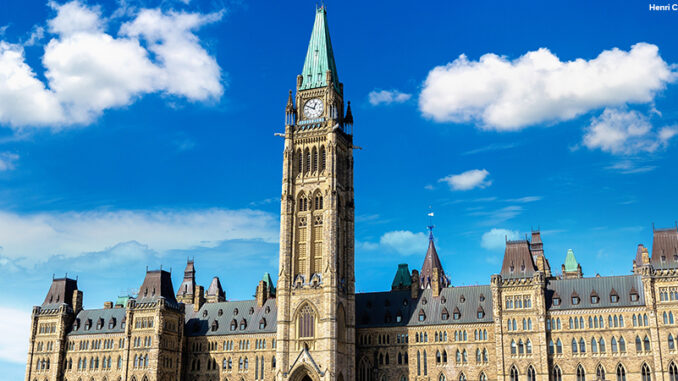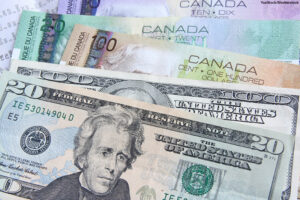
On April 28, 2025, Canada held a federal election. The election was very close, and no party was able to win a majority of seats in Parliament. However, the Liberal Party of Canada won the most seats and is expected to join with some of the other smaller parties in Canada in a coalition that will form the new government. The outcome of the election was very surprising because just a few weeks earlier, the Liberal Party had been trailing in the polls by over 20 points. No one expected they would come back to win the most seats. So what happened? This story takes a closer look at the issues that most impacted the election.
In January 2025, Canada’s Prime Minister Justin Trudeau, announced he would step down from his position as leader of the Liberal Party of Canada, a role he held for a decade. Because his party had a majority in Parliament, this meant whoever the Liberal Party chose as a new leader would become Canada’s Prime Minister.
In March, the Liberal Party overwhelmingly selected Mark Carney to be their new leader, and soon after he was sworn in as Prime Minister, becoming the first person in Canadian history to become Prime Minister without first leading his party to victory in an election.
Who is Mark Carney?
Carney is a 60-year-old banker who had never held political office before being chosen to be prime minister. The son of two teachers, he was born in Canada’s Northwest Territories. He is the first prime minister from that part of Canada. Carney attended both Harvard and Oxford Universities, where he studied economics. He served as governor of the Bank of Canada and governor of the Bank of England. (He was the first non-British person to serve as governor of the Bank of England.) Carney also helped Great Britain navigate Brexit–when Britain separated itself from the European Union. He also helped lead Canada through its 2008 financial crisis while serving at the Bank of Canada. With Canada’s relationship with the United States facing challenges because of President Trump’s decision to impose tariffs on Canadian goods, Carney’s economic experience was an important factor in the Liberal Party’s decision to choose him as their leader.
A Surprising Change in Opinion
When Trudeau announced his resignation, polls showed the Liberal Party to be very unpopular with voters. The Conservative Party, led by Pierre Poilievre was the clear front-runner to win a majority of seats in Parliament and take control of the Canadian federal government. Poilievre has served in Canadian politics for more than two decades. The first polls taken after Carney replaced Trudeau showed Poilievre’s Conservative Party leading the Liberal Party by more than 20 percentage points.

A major factor in the election was Canada’s relationship with the United States, and specifically Canadian reaction to President Trump’s tariffs on goods coming into the United States. Three-fourths of all Canadian exports go to the United States. But Trump imposed a 25 percent tariff on Canadian goods, such as aluminum, steel, cars, and lumber. He has also publicly discussed his desire to annex Canadian land and resources. On Canada’s election day, for example, Trump posted on social media that Canada should become the 51st state. Trump’s actions led to a surge of Canadian nationalism and led many voters to focus on which of their political parties would be best able to stand up to the United States. The result was a split decision. Instead of the Conservative Party winning a clear majority and control of the government as had been expected a few weeks earlier, the Liberal Party gained back just enough support to win the most seats in Parliament even though they did not get a majority either. This meant that Mark Carney would form the next government in coalition with some of the smaller parties and remain Prime Minister of Canada.
After he won, Prime Minister Carney’s acceptance speech focused on unity among Canadians and standing up to President Trump. He discussed how the good relationship between the U.S. and Canada, which began after World War II, had now come to an end.
Trump did call the prime minister elect to congratulate him. In the call, both leaders expressed the importance of working together to move forward. However, Carney has already made a noticeable break from tradition: rather than visiting the United States for his first foreign trip as prime minister, he decided to visit Europe instead. (Carney did make his official visit to the United States on May 6 and held a discussion with Trump in the White House Oval Office.)
Challenges Ahead
The strained relationship between Canada and its closest neighbor, the United States, is a major challenge for both countries going forward. Carney has promised to respond to Trump’s tariffs by levying counter-tariffs on goods from the United States. Moreover, he has said that every dollar of those counter-tariffs will go to supporting Canadian workers whose jobs might be threatened by the U.S. tariffs.
But Carney faces domestic problems as well. His party only won 169 seats, three short of securing a majority. This means that the Liberal Party will need to work with a smaller party in order to get legislation passed. In addition, Canda faces an ongoing crisis with rising food and housing costs.
